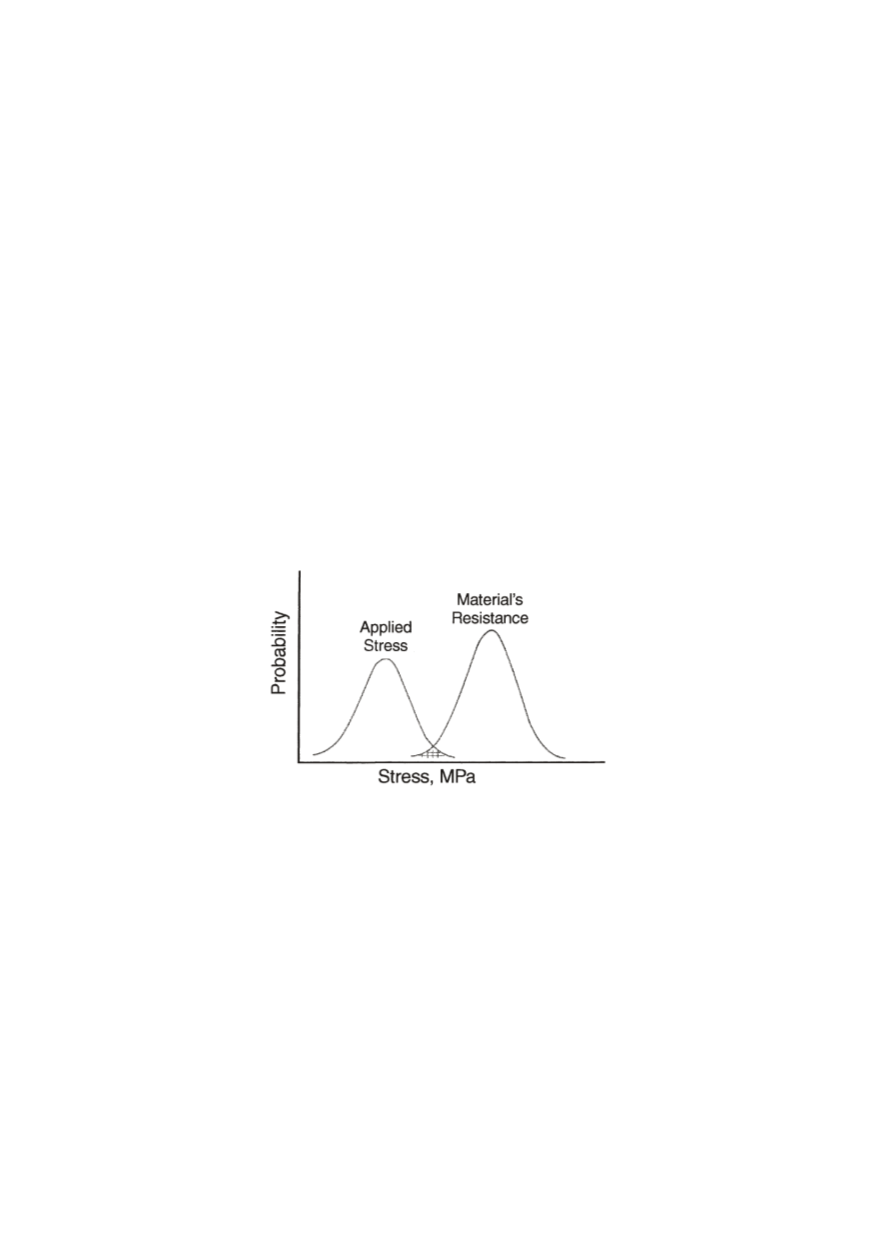

4
resulted in significant advances in stress analysis. The advent of the high-speed computer
has led to further rapid advances in the use of numerical methods of stress analysis using
the finite element method (FEM), and improved knowledge of material behavior has led
to advances in development of constitutive relations based upon dislocation theory,
plasticity, and mechanisms of fracture.
Design philosophies such as safe-life and fail-safe have also been developed,
particularly in the aerospace field.
For a safe-life, a structure is designed as a statically determined structure intended to
last without failure for the designed lifetime of the structure. To guard against premature
failure, the component should be periodically inspected during its in-service lifetime.
In the fail-safe approach, the structure is designed in such a way that if one member of
the structure were to fail, there would be enough redundancy built into the structure that
an alternate load path would be available to support the loads, at least until the time of the
next inspection. Consideration must also be given to the spectrum of loading that a struc-
ture will be called upon to withstand in relation to the scatter in the ability of materials to
sustain these loads. As indicated in Fig. 1, danger of failure is present when these two
distributions overlap. In addition, new fields such as fracture mechanics, fatigue research,
corrosion science, and nondestructive testing have emerged. Important advances have
also been made in improving the resistance of materials to fracture. In the metallurgical
field, these advances comprise better alloy design and control of chemistry, and
improvements in metal processing and heat treatment.
Figure 1: Schematic frequency distributions showing the applied stresses and material resistance
The failure analyst often has to determine the nature of a failure; for example, was it
due to fatigue or to an overload? In many cases, a simple visual examination may suffice
to provide the answer. In other cases, however, the examination of a fracture surface
(fractography) may be more involved and may require the use of laboratory instruments
such as the light microscope, the transmission electron microscope, and the scanning
electron microscope. Many of today’s investigations are quite costly and complex, and
require a broad range of expertise as well as the use of sophisticated laboratory
equipment. Many investigations are also carried out by manufacturers to ensure that their
products perform reliably. In addition, a number of companies now exist for the purpose
of carrying out failure analyses to assist manufacturers and power plant owners, as well as
to aid in litigation. The results of many of these investigations are made public, and thus
provide useful information as to the nature and cause of failures, but unfortunately, the
results of some investigations are sealed as part of a pretrial settlement to litigation.


















